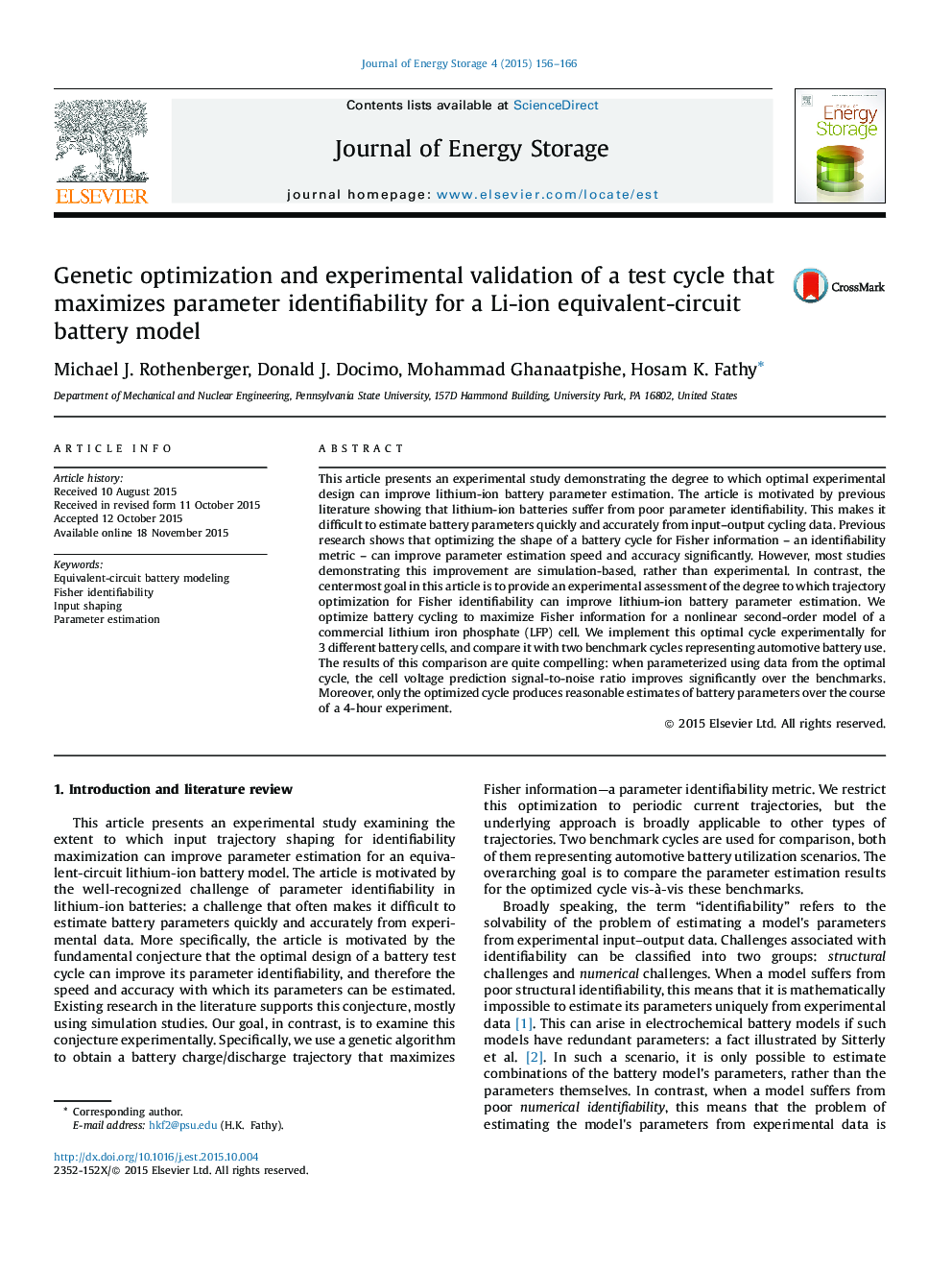| Article ID | Journal | Published Year | Pages | File Type |
|---|---|---|---|---|
| 7540521 | Journal of Energy Storage | 2015 | 11 Pages |
Abstract
This article presents an experimental study demonstrating the degree to which optimal experimental design can improve lithium-ion battery parameter estimation. The article is motivated by previous literature showing that lithium-ion batteries suffer from poor parameter identifiability. This makes it difficult to estimate battery parameters quickly and accurately from input-output cycling data. Previous research shows that optimizing the shape of a battery cycle for Fisher information - an identifiability metric - can improve parameter estimation speed and accuracy significantly. However, most studies demonstrating this improvement are simulation-based, rather than experimental. In contrast, the centermost goal in this article is to provide an experimental assessment of the degree to which trajectory optimization for Fisher identifiability can improve lithium-ion battery parameter estimation. We optimize battery cycling to maximize Fisher information for a nonlinear second-order model of a commercial lithium iron phosphate (LFP) cell. We implement this optimal cycle experimentally for 3 different battery cells, and compare it with two benchmark cycles representing automotive battery use. The results of this comparison are quite compelling: when parameterized using data from the optimal cycle, the cell voltage prediction signal-to-noise ratio improves significantly over the benchmarks. Moreover, only the optimized cycle produces reasonable estimates of battery parameters over the course of a 4-hour experiment.
Keywords
Related Topics
Physical Sciences and Engineering
Energy
Energy (General)
Authors
Michael J. Rothenberger, Donald J. Docimo, Mohammad Ghanaatpishe, Hosam K. Fathy,
